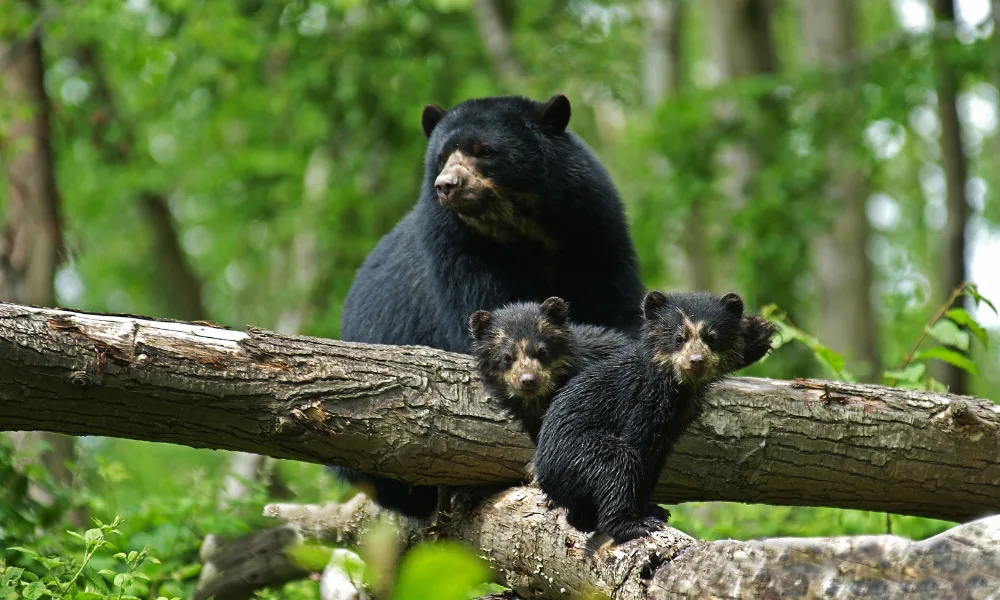The Manu National Park is a sanctuary of Amazonian biodiversity. Here lives the spectacled bear in Manu, also known as the Andean bear, ukukú, or Ucumari (in Quechua). This mammal is the only native bear in South America. Its fur is dark (black or deep brown) with whitish markings around the eyes. In Manu, it inhabits cloud forests and highland jungles, feeding mostly on fruits, plants, and honey. In this article, you’ll learn about its size, weight, reproduction, conservation status, cultural significance, the best time to spot spectacled bears in Manu, tips for observing them in the wild, and how to plan your trip to see the spectacled bear in Manu.
What is the Spectacled Bear?
The spectacled bear (also known as the Andean bear, ucumari, frontino, or ukukú) is an omnivorous mammal species native to the tropical Andes of South America. It is the only bear species in South America. It lives in mountains, jungles, cloud forests, and highland grasslands, at elevations ranging from 250 to over 4,000 meters. In Andean culture, it is considered a sacred animal, and in Manu, the wild spectacled bear is one of the most fascinating species for international travelers.
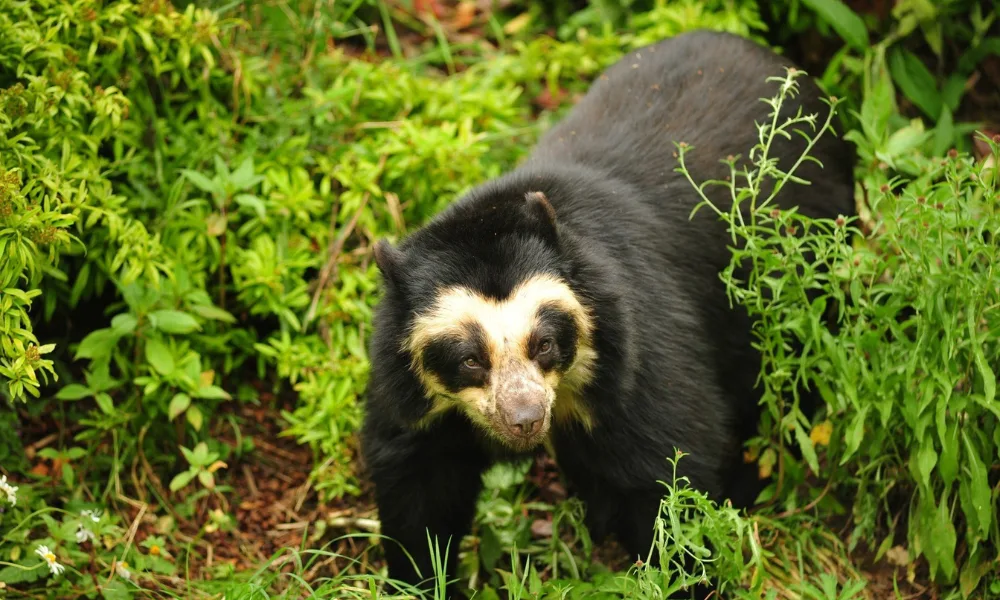
Spectacled Bear or Andean Bear
- Scientific name: Tremarctos ornatus, derived from Latin and Greek, as is common in zoological nomenclature.
- Size and weight: Males can reach up to 1.8 meters tall and weigh between 100 and 200 kg. Females can reach up to 1.5 meters and weigh between 35 and 85 kg.
- Color and fur: They have dark fur (black or brown), long and coarse, with light patches around the eyes, snout, and chest, which are unique to each bear.
- Reproduction: Females reach sexual maturity between 3 and 5 years. Gestation lasts 5.5 to 8.5 months, typically giving birth to 1 to 3 cubs, which they care for for about a year.
- Behavior: It is a solitary, shy, and diurnal animal. It climbs trees, marks territory with its claws, and roams long distances in search of food.
- Lifespan: Lives around 20 years in the wild, and over 35 years in captivity.
- Conservation status: Classified as a vulnerable species, threatened by deforestation, illegal hunting, and habitat loss.
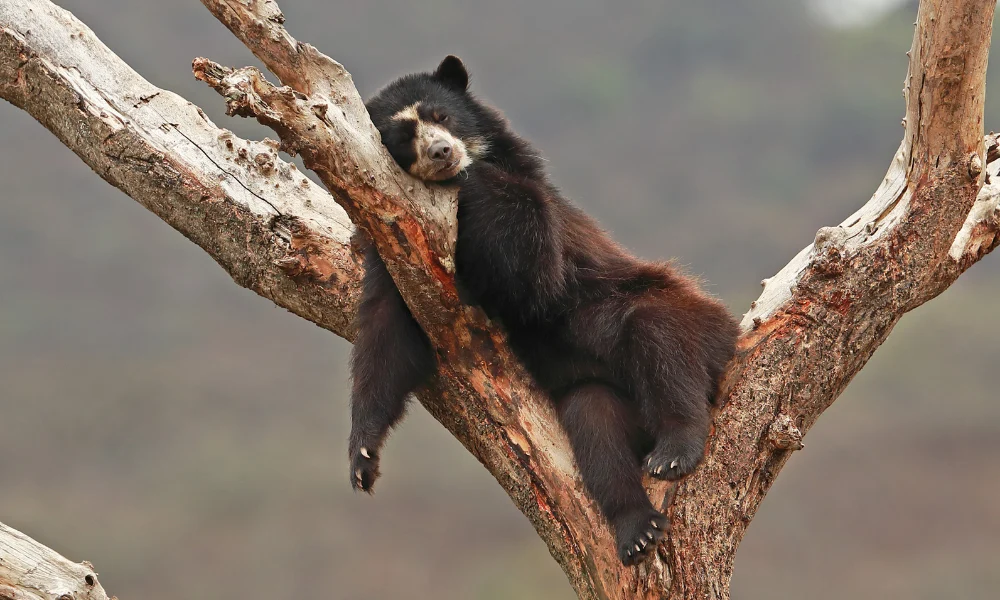
How Is It Connected to Andean Cultures?
The spectacled bear has a deep connection with indigenous Andean and Amazonian cultures. It is considered a magical and sacred animal, a mediator between heaven and earth, between spirits and humans. Some communities see it as a protector of the forest or a spiritual ancestor. Its figure appears in legends, dances, and rituals, such as the famous “ukuku” in traditional festivities. In Manu, native peoples venerate it as a symbol of wisdom and natural balance.
What Is the Best Time to See the Spectacled Bear in Manu?
The best time to see the spectacled bear in Manu is during the dry season, from May to October. During these months, there is little rain, roads are passable, and there is greater visible wildlife activity. During this time, the bears descend from the high forests in search of food, especially fruits. The rainy season (November to March) makes access difficult and reduces the chances of sightings.
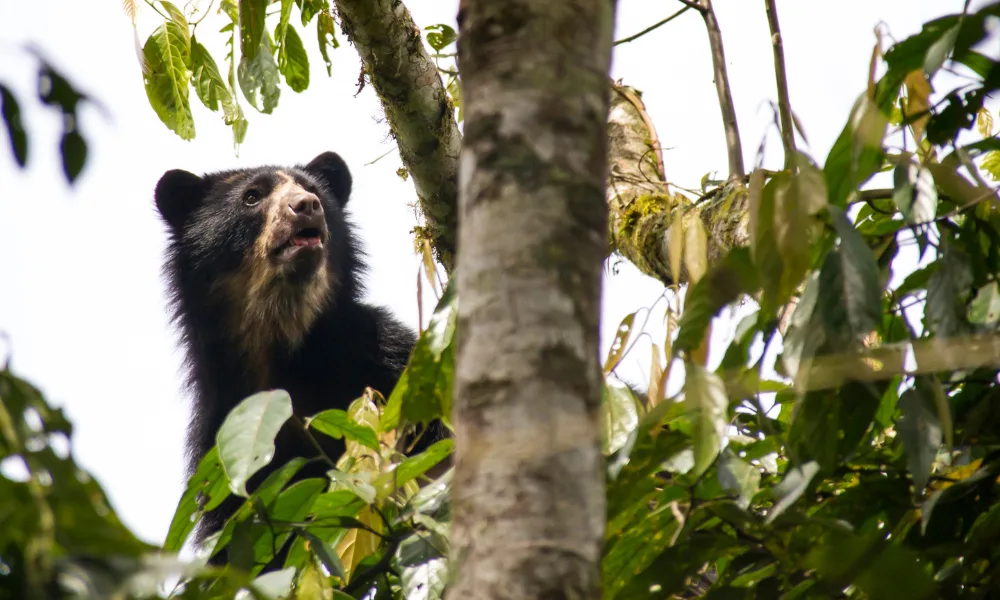
Where Does the Spectacled Bear Live in Peru?
The spectacled bear lives in many parts of Peru, especially in cloud forests and Andean highlands. Here are some of its most well-known habitats:
- Manu National Park (Cusco): One of the most important habitats of the spectacled bear in Peru. Frequent sightings in cloud forest areas.
- Historic Sanctuary of Machu Picchu (Cusco): Although the main population is lower down, some individuals have been spotted near the Inca Trail.
- Cerros de Amotape National Park (Piura/Tumbes): Dry forest in the north where they have also been recorded.
- Cutervo National Park (Cajamarca): High-altitude forests of Nieva with bear records.
- Río Abiseo National Park (San Martín): Cloud forests of the central-northern region.
- Huascarán National Park (Áncash): High-altitude grassland in the Cordillera Blanca.
- Yanachaga-Chemillén National Park (Pasco): Montane forest of Oxapampa.
- Tingo María National Park (Huánuco): High jungle with observed footprints.
- National Sanctuaries Tabaconas-Namballe (Cajamarca) and Ampay (Apurímac): Dry and montane forests with occasional sightings.
- Private areas (e.g. Chaparrí in Lambayeque, Huiquilla in Amazonas) and community forests: Some bears move into buffer zones of parks.
They have also been recorded in private and communal areas, outside protected zones. However, Manu National Park remains one of the best places to see the spectacled bear in its natural habitat.
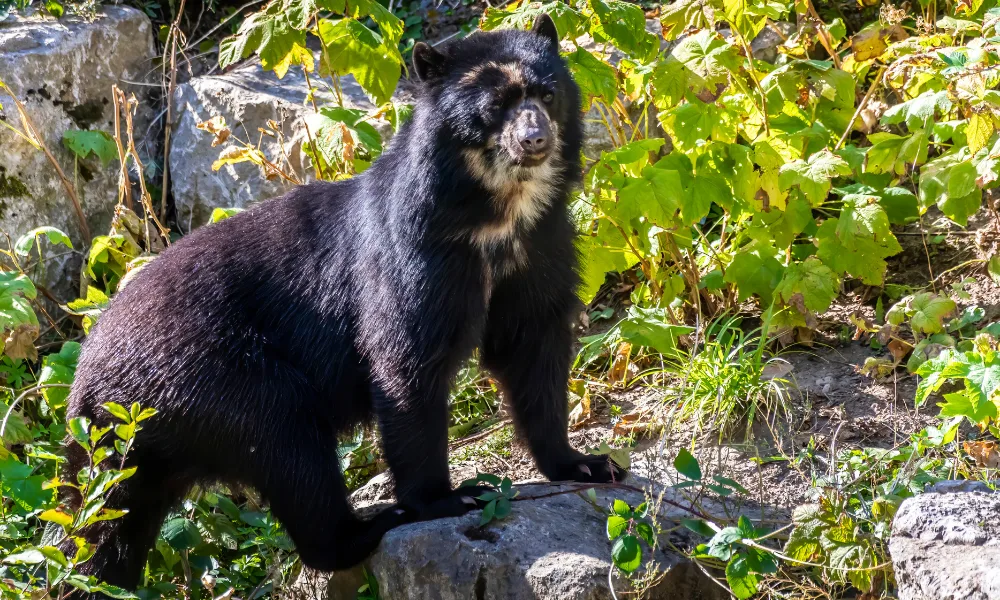
Tips and Recommendations to See the Spectacled Bear in the Wild
To successfully spot the Andean bear in Manu, keep the following in mind:
- Hire a tour with a specialized guide: Ideally with operators like Travel Peru Agency, which offer wildlife-focused itineraries in Manu.
- Go during the dry season: From May to October, visibility is better and wildlife is more active.
- Be patient and quiet: The bear is elusive. Sometimes you have to wait silently to observe it.
- Wear appropriate clothing: Neutral colors, comfortable shoes, repellent, and binoculars.
- Don’t use flash: When photographing, avoid bright lights that may scare the animal.
- Keep your distance: Never approach or feed a bear. Respect its space.
- Practice responsible tourism: Don’t leave trash, don’t stray off trails, and follow your guide’s instructions.
Travel Peru Agency guides know the areas with the highest chances of spotting the spectacled bear in Manu and offer photo safaris, hikes, and naturalist expeditions in small groups with an ecological approach.
Frequently Asked Questions about the Spectacled Bear in Manu
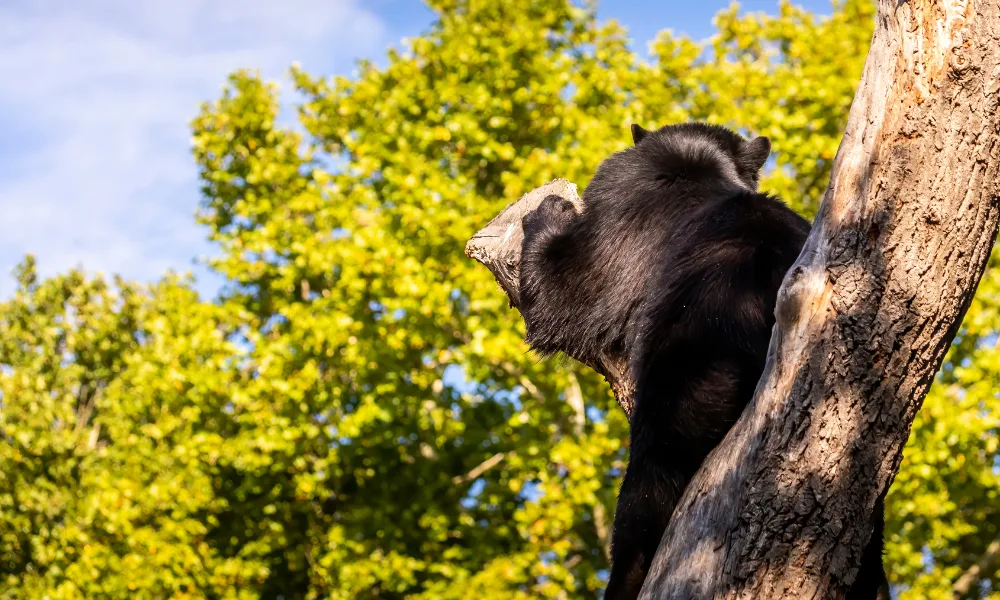
1. What is the scientific name of the spectacled bear?
The scientific name of the spectacled bear is Tremarctos ornatus. The word “ornatus” refers to the distinctive markings on the animal’s face, which resemble a pair of glasses. This bear is the only representative of the genus Tremarctos in South America, making it a unique species on this part of the continent.
2. How long does a spectacled bear live?
In its natural habitat, the spectacled bear can live for around 20 years. However, in controlled environments such as zoos or conservation centers, it can live more than 35 years, thanks to veterinary care and the absence of predators or external threats.
3. How many cubs does a spectacled bear usually have?
Females of this species typically give birth to 1 to 3 cubs per litter, with 2 cubs being the most common. These cubs are born blind and are completely dependent on their mother during the first few months.
4. What does the spectacled bear eat?
The spectacled bear has a varied diet, but it mainly feeds on wild fruits. It also eats plants, honey, insects, and small animals when available. It is an omnivorous species with a strong preference for plant-based foods.
5. Is the spectacled bear protected by law?
Yes, the spectacled bear is legally protected in Peru, due to its declining population. It is also classified as a vulnerable species, meaning it faces a high risk of extinction in the wild if proper conservation measures are not taken.
6. Is it common to see bears in Machu Picchu?
It is not very common to see spectacled bears in Machu Picchu, as they are solitary and elusive animals. The best place to observe them is the Manu National Park, where biodiversity is greater and the conditions are ideal for sightings.
7. How many spectacled bears are there in Peru?
It is estimated that only a few thousand spectacled bears exist across Peru. Although there is no exact census, experts agree that the population is small and fragmented, which poses a challenge for conservation.
8. Are there special tours to see the bear?
Yes, there are specialized tours for observing the spectacled bear, particularly in protected areas like Manu National Park. Agencies such as Travel Peru Agency offer wildlife observation excursions, including sightings of the Andean bear in its natural habitat.
9. What should I do if I see a spectacled bear?
You should stay calm, do not approach or try to feed it. The best option is to observe it from a safe distance and avoid any interaction. These animals are not usually aggressive, but they may react if they feel threatened.
10. What other animals can be seen in Manu National Park?
Manu is one of the places with the greatest biodiversity on the planet. There you can see jaguars, tapirs, several species of monkeys, macaws, anacondas, exotic birds, and many other animals. It is a paradise for nature lovers and wildlife photographers.
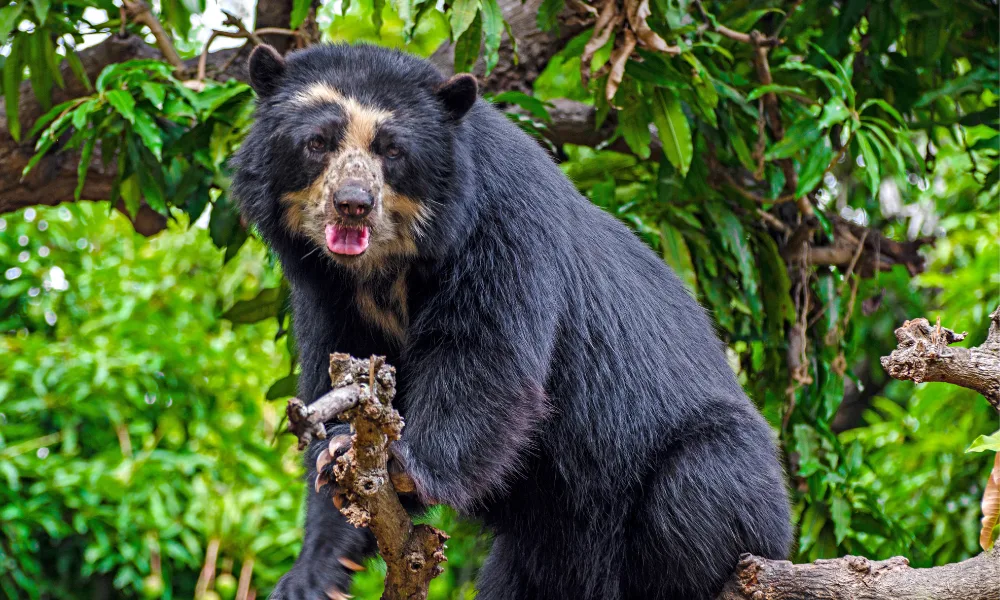
Seeing the spectacled bear in Manu is a unique experience that blends nature, culture, and adventure. To make it happen, it is important to plan ahead, travel during the right season, and trust responsible operators. Travel Peru Agency is an excellent choice for those seeking an unforgettable experience in one of the richest and most pristine ecosystems in the world. Get ready to encounter the Andean bear in its natural habitat and live a wild adventure in the Peruvian jungle. Contact us and book your adventure to Manu National Park, and with a bit of luck, you may spot the mysterious spectacled bear. Contact us and book your photo adventure in Manu, and with some luck, you may witness the spectacled bear in the wild.

